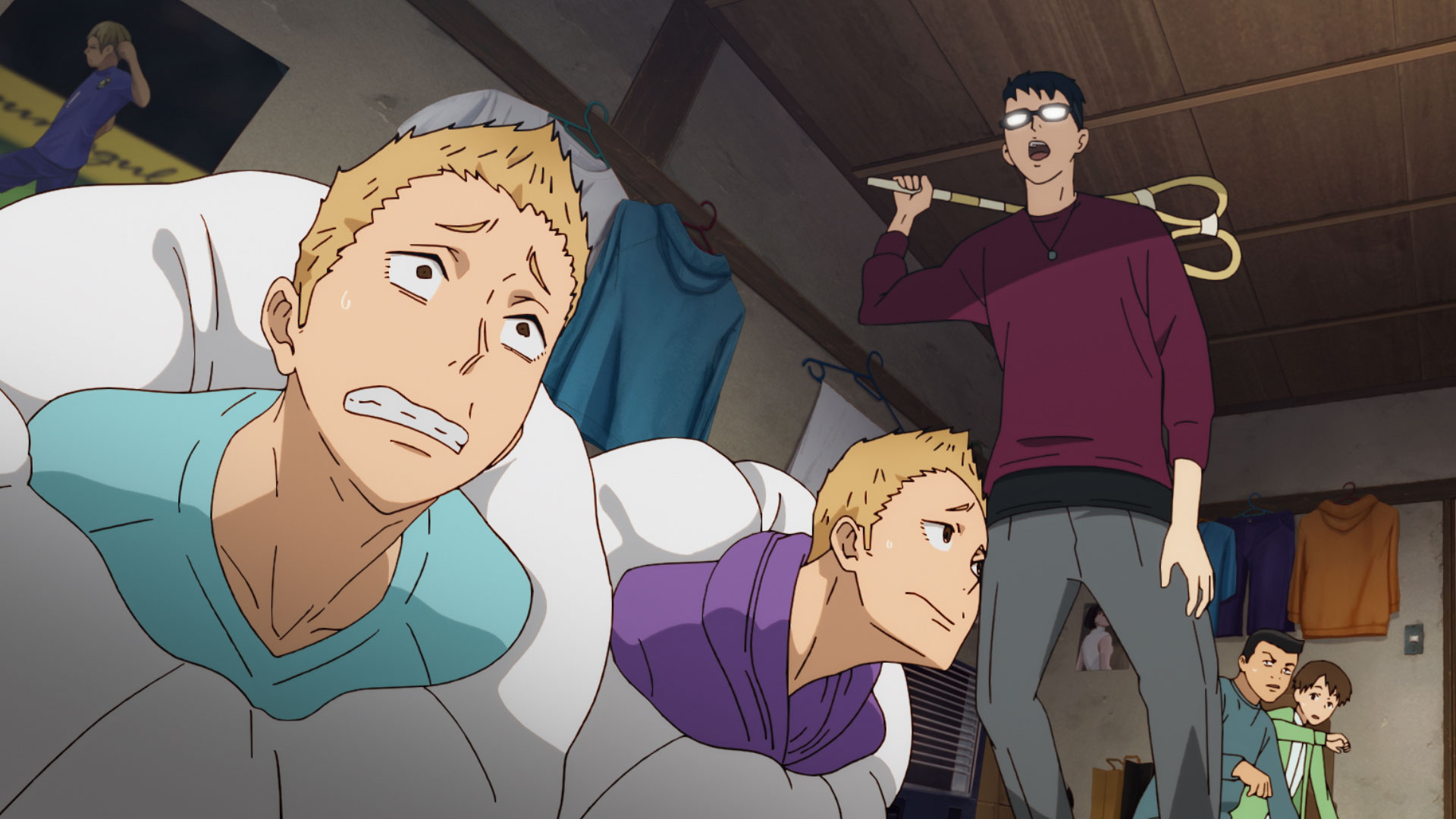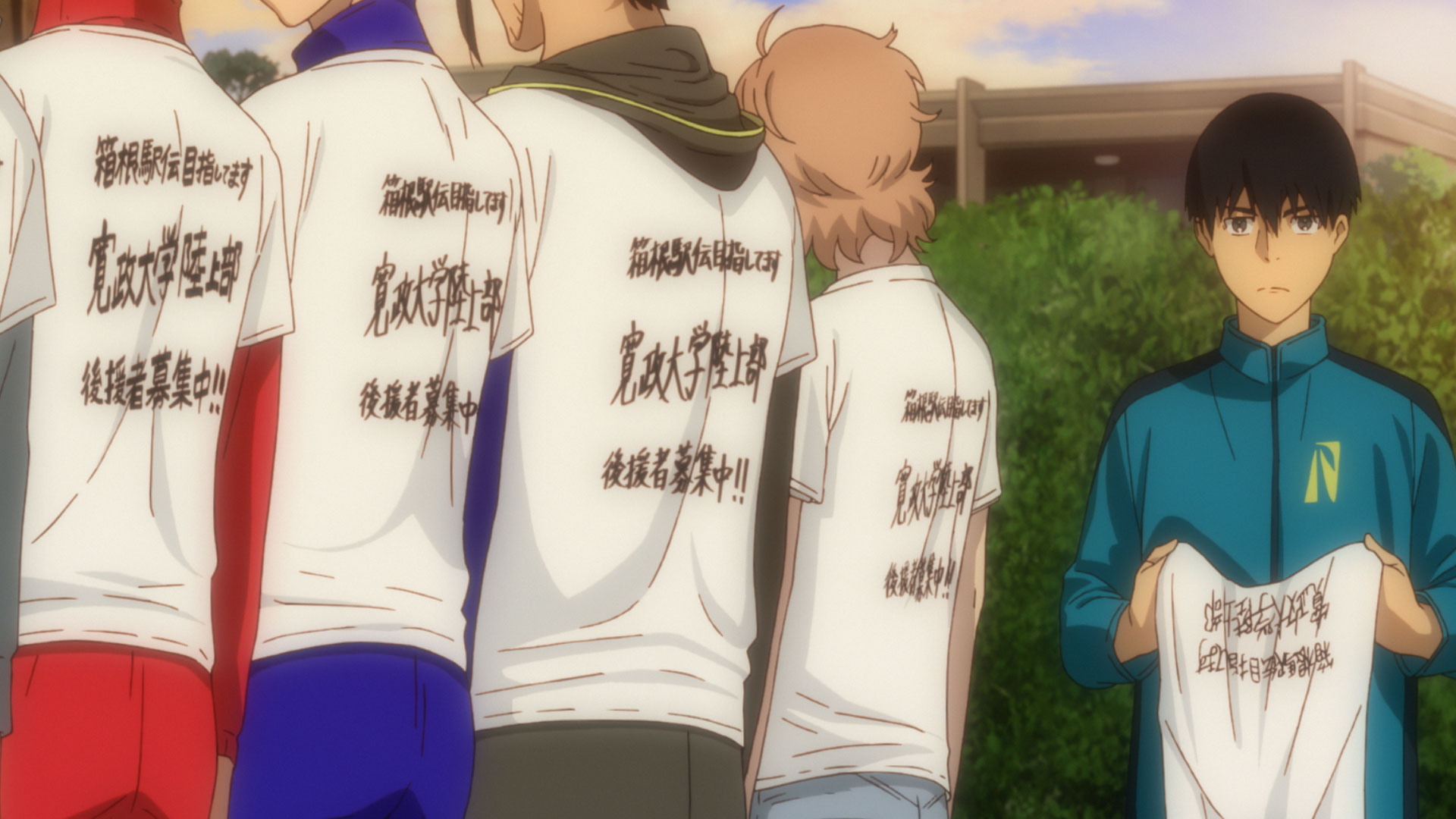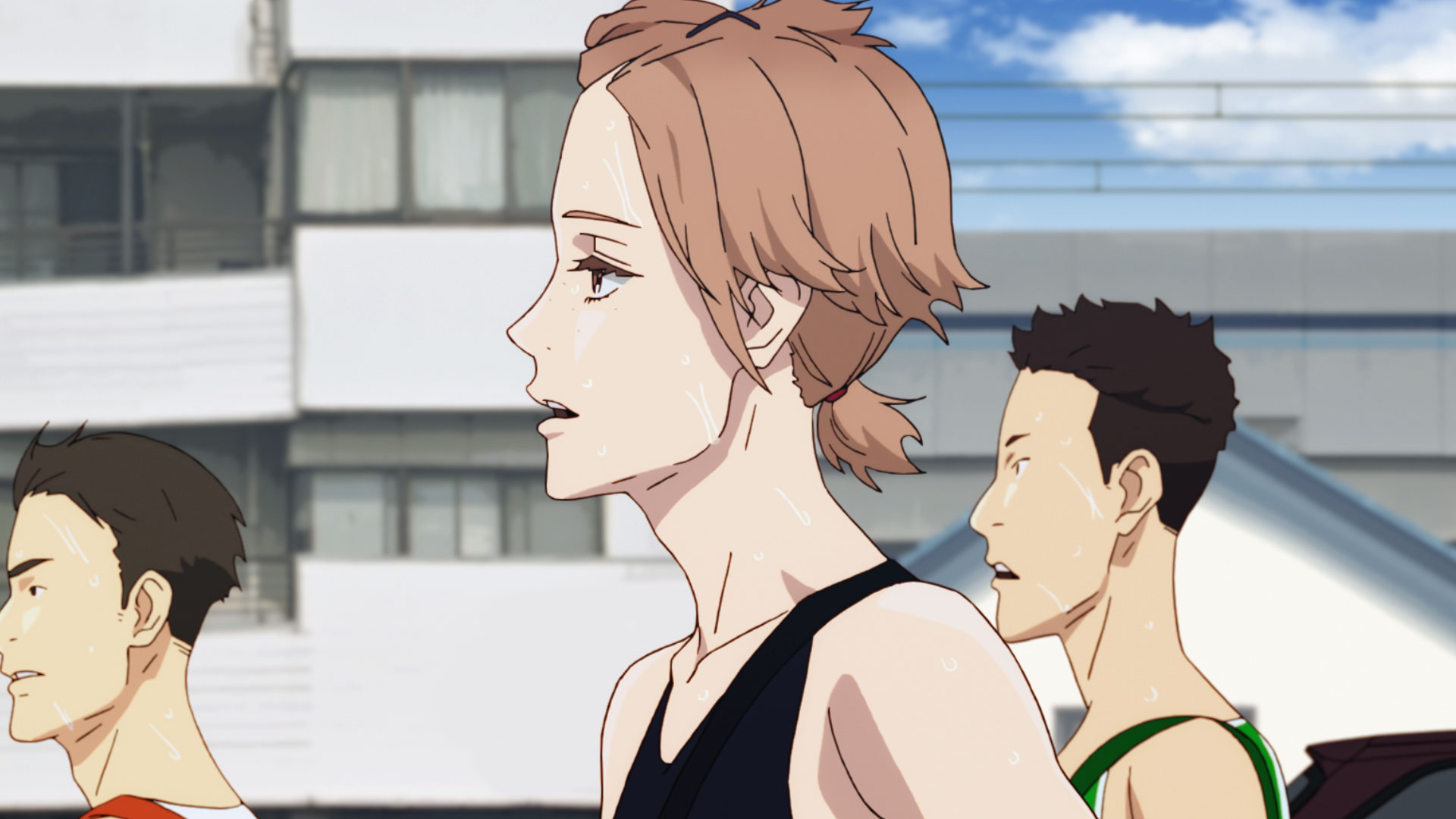ANIME REVIEW | Born To "Run with the Wind"
My experience with running can be summed up by my time in Lynn Classical High School’s Cross Country Team: lots of sweat, plenty of heavy breathing, and an abundance of shin splits. Naturally, I don’t look back fondly at my time in cross country, as every practice and race I went through was nightmarish! The strong-looking legs that I have are just for show, as they lack the ability to serve any purpose beyond power walking. (Needless to say, you can never count me in on any sort of fun run participation, as there’s no “fun” for me in any sort of run.)
Which brings me to Production I.G.’s Run with the Wind, an anime adaptation of Shion Miura’s 2006 novel about relay marathons. The studio knows how to bring any sort of excitement in a sports series, be it Kuroko’s Basketball or the beloved Haikyū!!. While the concept of relay marathons are somewhat foreign outside of Japan (only a couple are held in the Western world), the feeling of intensity that occurs during this massive race is ever-so present throughout its 23-episode run. But the real question is whether or not it adds something new to the sports anime genre.
Run with the Wind starts out with a bit of shoplifting, as a former running prodigy named Kakeru (Gabriel Regojo) snags a sandwich from a local convenience store. His running prowess catches the attention of Haiji (Blake Jackson), a fellow student at Kansei University. He offers Kakeru the chance to live in the dorm with his friends, only for the newcomer to become part of his lifelong goal of running the Hakone Ekiden. With ten people now living in the dorm, said goal can now be accomplished.
However, the rest of the residents are caught off-guard by Haiji’s plans. This includes the scrawny manga reader “Prince” (Mike Haimoto), quiz show-lover Yohei (Andrew Love), the twins Taro (Scott Gibbs) and Jiro (Nathan Wilson), and the foreign exchange student Musa Kamala (Jovan Jackson). At first, the residents fight tooth-and-nail to get out of running the Hakone Ekiden, but the unity of the friends somehow finds a way to push them towards wanting to help Haiji reach the top of the relay marathon. That, and it also helps that a cute girl named Hanako (Alyssa Marek) aids them with timing their runs.
Unlike Haikyū!!, Run with the Wind starts with a team’s origin. We first meet our unwilling-at-first participants when they’ve had barely any training at all. Outside of Kakeru and Haiji, none of them have even seriously ran a race before, with some of them not really in shape to do such a thing. So when we first see the rest of the dorm residents in action, they don’t magically become amazing at running; in fact, they pretty much suck at it! This aspect puts a big emphasis on realism for the story it wants to tell, as it demonstrates that sports talent isn’t something that just appears out of nowhere; it arrives with a lot of hard work and dedication.
What I liked about this anime is how it showcases the evolution of these characters as competitive runners. While they don’t become the greatest team in the history of relay marathons, they do transform into better people because of their participation. From “Prince”’s rise to running without looking like he’s about to drop dead to “Nico” (Ty Mahany) kicking his cigarette habit to the curb for the sake of their health, every teammate has their own personal mountain to climb. This is evident even in the experienced runners, with Haiji attempting to overcome an old injury and Kakeru pushing away a bad incident involving his previous running coach.
All of this training leads towards qualifying for the Hakone Ekiden, which is demonstrated as one grueling run! Despite it being animated, the realism placed on the bodies and faces of these runners demonstrates just how hard of a race it is to participate in. The sweat, the pains in joints, muscle spasms, and even the feeling of a runner’s high are showcased with intense visuals, something Production I.G is an expert at when it comes to sports anime. Although it doesn’t quite reach the exciting levels of their previous works, Run with the Wind still finds a way to draw viewers in with the importance of these sorts of races.
With that being said, this sports anime doesn’t throw anything new into the mix for its genre. It’s not a bad thing to stick to a well-working formula, but nevertheless I felt that the series as a whole didn’t have much in the originality department. There are some great social commentary elements here and there, especially when some students scoff at the idea of a foreigner being on a Japanese team, but it doesn’t dive too deep into the issues of racism as a whole. Then again, that would more than likely take focus away from what this anime aims to accomplish, which is more about the art of teamwork and rediscovering one’s passions.
Sentai’s English dub delivers some pretty good performances from their crew, with Jackson’s Haiji delivering a terrific can-do attitude throughout the team’s practices and races. Haimoto’s “Prince” starts off as a stereotypical otaku, only to blossom into a prime example of a limit-pushing winner who grunts and exasperates across the finish line. Gibbs and Wilson feed off each other as the twins, who make up for some of the better comedy within the series. Sadly, the weakest in the cast is Regojo, whose Kakeru comes off sort of wooden throughout the entire series.
Haikyū!! and My Hero Academia composer Yuki Hayashi jabs a little more excitement into the art of running thanks in part to his soundtrack. It shines best when the score is more ambient, especially during character monologues and dream sequences. But when it comes time to run, the music that blares through is like a good boost of adrenaline. Union Square Garden’s “Catch up, latency” is a fun opening song, but its successor “Kaze Tsuyoku, Kimi Atsuku” by Q-MHz & SKY-HI captures the thrill of the run far better. Taichi Mukai helms both end themes “Reset” and “Michi”, which acts as pretty good cool-downs.
Although the story may lack in uniqueness, what Run with the Wind offers is yet another fine example of why Production I.G is so good at crafting sports anime. The team’s evolution, training, and back stories make the story feel a lot more down-to-earth than most other sports anime, giving it a realist sort of attitude spread throughout its narrative. It may not have forced me to give running a second chance, but Run with the Wind nonetheless delivers a great story about overcoming the odds and pushing one’s self towards achieving a big goal.
Story:
Script:
Animation:
Voice Acting: (English dub)
Soundtrack:
Blu-Ray Extras: (Standard Edition)
Final Grade (not an average):
Promotional consideration provided by Mike Bailiff of Section23 Films










